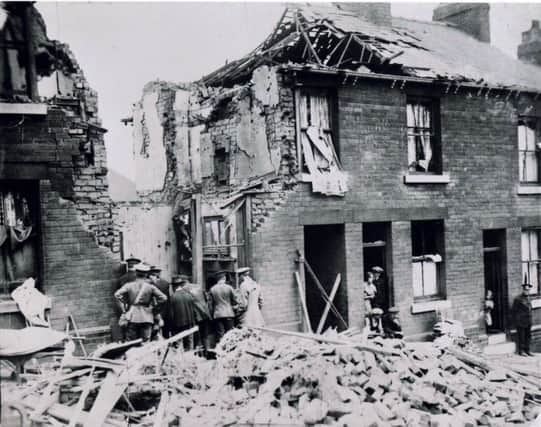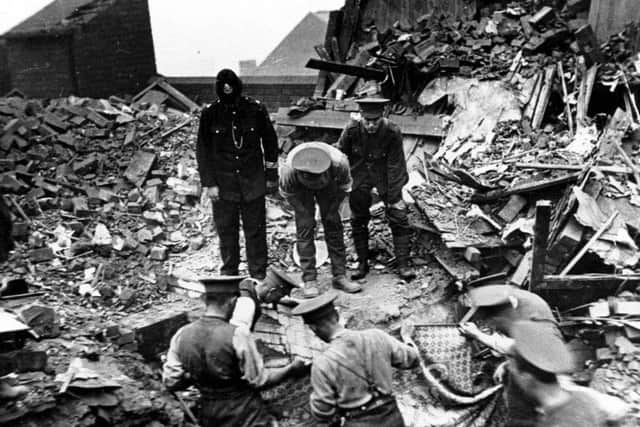Zeppelin: Shadow of fear that brought death to Sheffield


For what they described at the time as “15 minutes of frightfulness”, the hydrogen-filled airship hovered over the neighbouring Sheffield suburb of Oughtibridge, before heading to Burngreave and the city centre.
Its crude bombs were probably released by hand. They missed the munitions factories by a mile and dropped instead on half a dozen rows of houses. Nine men, ten women and ten children died. The youngest casualty was aged just 14 months.
Now, 101 years later, their stories have begun to emerge.


Advertisement
Hide AdAdvertisement
Hide AdA grant from the National Lottery earlier in the year financed research into an attack that was, despite the damage it wrought, little reported at the time and all but forgotten since.
Only a plaque on the wall of the former Baltic Works in Effingham Road, beneath two discarded flower baskets, commemorates the horror. “One of the bombs fell close to this spot,” it records. “Lest we forget.”
Zeppelin raids on Britain were increasingly common by September 1916 – Hull had taken several hits, on one occasion having mistaken for London by the German pilot – but the full details of the raid on Sheffield are only now being pieced together.
“The raids on Britain as a whole have been well documented by the Imperial War Museum, but there’s nothing much about Sheffield, and we’ve been trying to address that,” said Richard Godley of the Sheffield Zeppelin Study Group, which was handed £28,100 by the Heritage Lottery Fund.


Advertisement
Hide AdAdvertisement
Hide AdIt has used the money to research the records of local undertakers in the hope of telling some of the victims’ stories. An exhibition at the offices of the Burngreave funeral director, John Heath and Sons, turned up the great-grandson of one of the victims, Elizabeth Bellamy, who had, upon hearing the warning sirens, gone upstairs to check on the rest of the family.
The badly judged trajectory of the missiles saw her house in Writtle Street take a direct hit, and she died in hospital later that day. She was 57.
The undertaker’s records disclose that she was buried in a waxed oak coffin at a cost of £8 8s plus £4 16s for six coaches and a guinea for the car.
“The attack took the city by surprise,” Mr Godley said. “The authorities thought they were never going to be touched by anything like this. In that sense it was a little like 9/11.
Advertisement
Hide AdAdvertisement
Hide Ad“Very little resistance was offered and I think the attack was seen as an embarrassment. The military officers in the city were at a tea dance when it happened.”
Anti-aircraft weaponry was still in its infancy during the First World War and although an aircraft was scrambled to try to locate the airship, it was defeated by the weather.
“At the beginning of the war they didn’t have mounted guns in the aircraft and the only way to take down a Zeppelin was to fire darts at it from a biplane,” Mr Godley said.
The study group is now working on a book that will record its findings about the events.
Advertisement
Hide AdAdvertisement
Hide AdTHE airships that bore the name of Count von Zeppelin, a retired German army officer, were intended in peacetime for luxury travel. But from 1915, more than 50 bombing raids were launched over Britain - the first time war had been waged on the home front.
The first raid on Hull killed 45 people. Grimsby, Bradford, Beverley, Goole, York and Hedon all suffered damage.
But the accurate targeting of military sites by Zeppelin was impossible, and the large numbers of civilian casualties earned the crafts the nickname “baby killers”